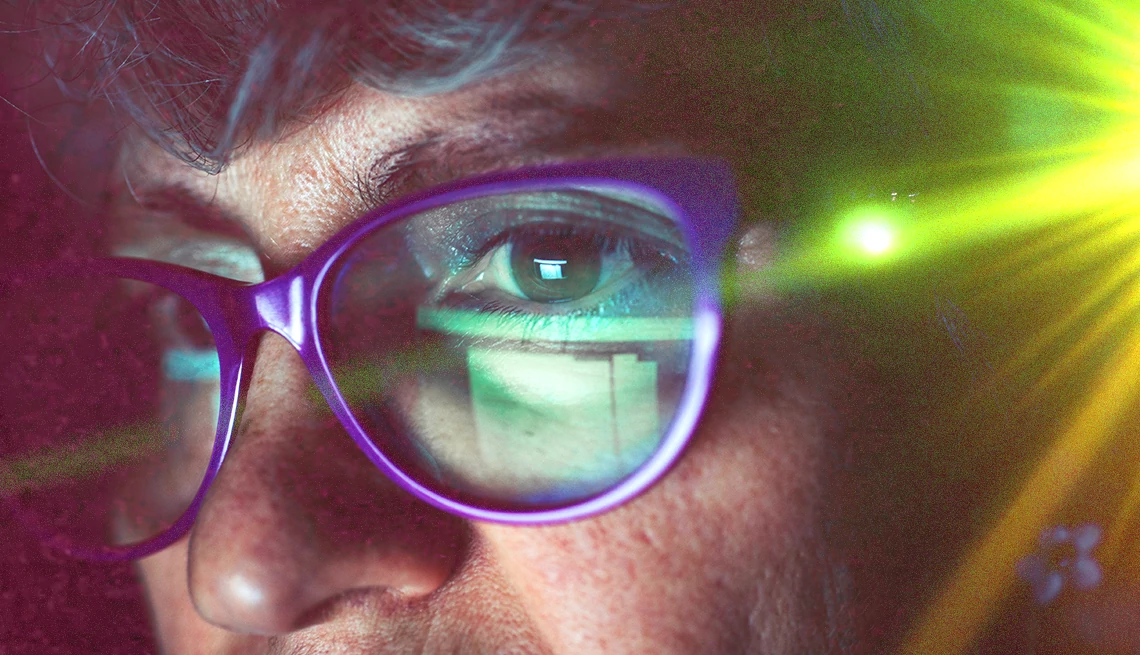AARP Hearing Center


Squinting to read a menu. Having trouble driving in the dark. Enlarging the font on your phone. Those are vision changes you may expect with age — but what about more unexpected symptoms? If you’re seeing a flash of light like a camera flash or lightning to the side of your vision, it’s alarming. Although it’s something that can become more common with age, when a patient has flashes in their vision, eye experts tend to worry.
Top causes of flashes of light in your eyes
The most frequent cause of a flash in your vision has to do with your retina, specifically a condition called posterior vitreous detachment, or PVD. In short, this is when the gel inside your eye (the vitreous) separates from your retina.
“The retina is a film that covers the backside of the eye. It’s like the film of a camera,” says Merina Thomas, M.D., assistant professor of ophthalmology in the OHSU School of Medicine in Portland. The retina captures light signals, sends them to the optic nerve in the back of your eye, which then sends it to your brain so you can see,” she explains.
What happens as you age is that the vitreous – or the “jelly of the eye” – begins to change. “It goes from a semi-solid gel to egg white consistency,” says Allen Chiang, M.D., a retina specialist at WillsEye Hospital in Philadelphia.
That’s often no big deal when it comes to your vision and eye health, but this normal separation sometimes causes complications. As the gel changes, it moves around more in the eye and may tug on the retina. That pulling on the retina, essentially an electrical-type tissue, says Chiang, might trigger lightning bolt-like flashes or other floaters.
When you should call a doctor
Here’s how people describe these symptoms, our experts say:
- A camera flash or lightning flash in your peripheral vision lasting one or two seconds.
- May be accompanied by floaters, which are dark spots or lines in your vision. “This isn’t one or two. Often the description is hundreds, like someone took a pepper shaker and shook it in front of their eyes,” says Thomas.
- No pain – the retina doesn’t have pain receptors, so flashes will not “feel” like anything.
- Flashes and floaters come on as a burst or suddenly.
These are easy to dismiss because flashes and floaters can come and go without causing any pain, so it doesn’t feel urgent. However, it is urgent. If you have these symptoms, you should call your eye care provider and be seen for a dilated retinal examination within 24 hours, advises Chiang.
Yes, eye care offices can be busy, but if you describe these symptoms (lightning or camera-like flashes) to a provider, they will get you in right away. Why? They want to rule out a retinal tear or retinal detachment, both of which require prompt treatment.





































































More From AARP
Common Eye Conditions in Older Adults
These common symptoms may be signs of an eye disease
6 Best Vitamins for Eye Health
Find out which nutrients are essential for protecting vision
How to Protect Your Vision
21 ways to take charge of your eye health